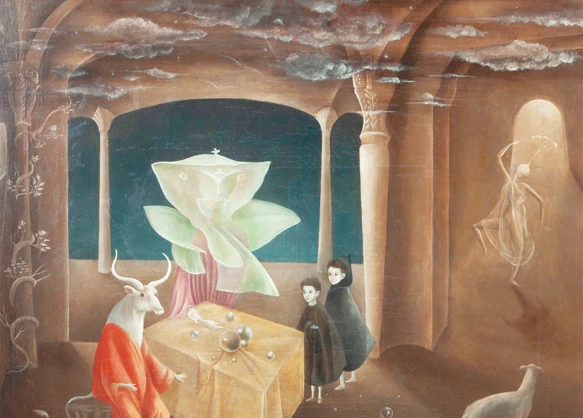Throughout art history, there have been numerous movements that have challenged the boundaries of traditional artistic expression. One such movement is Surrealism, which emerged in the early 20th century as a rebellion against rationality and conventional thinking. Surrealists sought to tap into the unconscious mind and explore the realm of dreams, fantasies, and the irrational. In this article, we will delve into the fascinating connection between Surrealism and the ancient practice of Tarot. Tarot, with its rich symbolism and enigmatic imagery, has had a profound impact on Surrealist artists and their techniques. We will explore the history of Tarot, its symbolism, and how it influenced the Surrealist art movement. Additionally, we will discuss the interpretation of Tarot in Surrealist art and its lasting legacy in the art world. Join us on this journey as we unravel the intriguing relationship between Tarot and Surrealism.
Contents
- Understanding Surrealism
- Exploring Tarot
- The Tarot Influence on Surrealist Art
- Impact on Surrealist Techniques
- Interpretation of Tarot in Surrealist Art
- The Legacy of Tarot in Surrealist Art
- Conclusion
-
Frequently Asked Questions
- What is the purpose of Surrealism?
- How did Surrealism emerge?
- What are the key elements of Surrealism?
- What is automatism in Surrealism?
- What is the history of Tarot?
- What is the symbolism of Tarot cards?
- How did Tarot influence the Surrealist art movement?
- What is the connection between Tarot and Surrealist techniques?
- How did Surrealists interpret Tarot in their art?
- What is the legacy of Tarot in Surrealist art?
- References
Understanding Surrealism
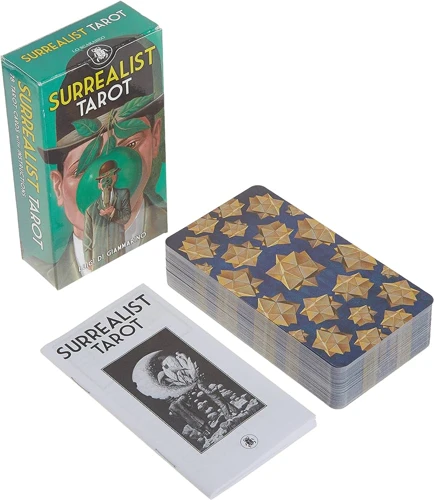
Surrealism is a groundbreaking art movement that emerged in the early 20th century, characterized by its exploration of the unconscious mind and the merging of dreams and reality. The Birth of Surrealism can be traced back to the aftermath of World War I when artists and writers sought to challenge societal norms and rationality. Led by André Breton, a group of intellectuals and artists came together to form the Surrealist movement, aiming to liberate the mind from the constraints of reason and embrace the irrational and the unconscious. Key Elements of Surrealism include automatism, which is the practice of creating art without conscious control, and the use of dream-like imagery and symbolism. Surrealist artists also sought to blur the boundaries between the real and the imaginary, creating a sense of perplexity and surprise for the viewer. Surrealism was influenced by psychology, philosophy, and even spirituality, as seen in the use of Tarot cards in their artistic endeavors.
The Birth of Surrealism
The Birth of Surrealism can be traced back to the aftermath of World War I, a time of social and political upheaval. Driven by a desire to break free from societal norms and rationality, a group of intellectuals and artists came together under the leadership of André Breton to form the Surrealist movement. Breton, in his manifesto “The Surrealist Manifesto,” declared that Surrealism sought to unleash the creative potential of the unconscious mind. This rebellion against reason and logic was a direct response to the trauma and disillusionment caused by the war. Surrealists believed that by tapping into the irrational and the subconscious, they could access a deeper truth and create a new reality. The Birth of Surrealism marked a radical departure from traditional artistic movements, as artists began to explore the realms of dreams, fantasies, and the inexplicable. They rejected the logic of the conscious mind and embraced chance, spontaneity, and automatism in their creative process. The movement aimed to challenge and provoke, to disrupt the status quo and break down the barriers between art and everyday life. The Birth of Surrealism was a bold declaration that art could be a transformative force capable of revolutionizing perception and challenging societal conventions. Surrealist artists sought to capture the essence of the unconscious, the mysterious and the enigmatic, and to bring it into the realm of artistic expression. This laid the foundation for a movement that would have a lasting impact on the art world and beyond. The Birth of Surrealism was a pivotal moment in the history of art, forever changing the way we perceive and engage with the creative process. It set the stage for the exploration of the irrational and the subconscious, paving the way for the integration of diverse influences, such as Tarot and its symbolism, into the Surrealist art movement.
Key Elements of Surrealism
- Automatism: One of the key elements of Surrealism is automatism. Surrealist artists embraced the concept of automatism, which involves creating art without conscious control or rational thought. The goal was to tap into the unconscious mind and allow spontaneous and unfiltered expressions to emerge. This technique enabled Surrealists to access hidden desires, fears, and dreams.
- Dream-Like Imagery: Surrealist art often features dream-like imagery, blurring the boundaries between the real world and the realm of dreams. Through their artworks, Surrealists aimed to challenge the viewer’s perception of reality and provoke a sense of wonder and perplexity. Dreams were seen as a gateway to the unconscious mind, where desires, fears, and hidden meanings reside.
- Symbolism: Symbolism played a crucial role in Surrealist art. Surrealists utilized symbols to convey deeper meanings and explore the subconscious. The use of symbols allowed artists to communicate abstract concepts and tap into universal archetypes. These symbols often carried personal, cultural, and even societal significance, inviting viewers to interpret the artwork through their own experiences.
- Blurring of Boundaries: Surrealists aimed to challenge and blur the boundaries between different concepts, such as reality and imagination, reason and absurdity, and conscious and unconscious. By merging contradictory elements, they sought to break free from conventional thinking and embrace the realm of the irrational and the unexpected.
The key elements of Surrealism encompassed automatism, dream-like imagery, symbolism, and the blurring of boundaries. These elements allowed Surrealist artists to delve into the depths of the unconscious mind and create artworks that challenged traditional notions of reality and rationality. The influence of these elements can be seen not only in the realm of art but also in other avenues such as literature, film, and even spirituality, where artists and thinkers continue to explore the mysteries of the human psyche.
Exploring Tarot
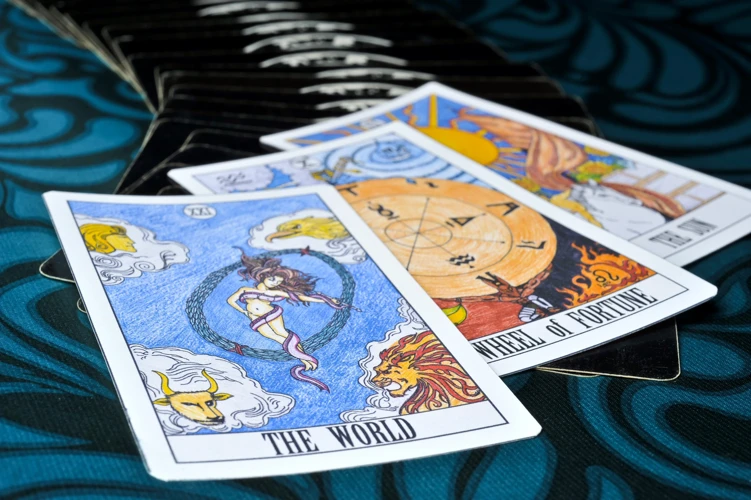
Tarot is an ancient practice steeped in mysticism and symbolism. A Brief History of Tarot reveals that its origins can be traced back to 15th-century Europe, although its exact origins remain shrouded in mystery. Originally used as playing cards, Tarot cards eventually gained spiritual significance as they became associated with divination and fortune-telling. Each card in a Tarot deck holds its own unique symbolism and meaning, making it a powerful tool for introspection and self-reflection. The Symbolism of Tarot Cards is vast and encompasses universal archetypes that tap into the collective unconscious. The Major Arcana represents major life events and spiritual themes, while the Minor Arcana delves into the everyday experiences and emotions of human existence. Tarot has influenced various mystical traditions and spiritual practices over the centuries, including its Influence on Eastern Mystical Traditions. Today, Tarot continues to captivate and inspire, playing a significant role in modern witchcraft and spiritual exploration, as explored in its Influence on Modern Witchcraft. The evolution of Tarot symbolism has also been a fascinating subject of study, revealing how its imagery and interpretations have evolved over time, as seen in the Evolution of Tarot Symbolism.
A Brief History of Tarot
The history of Tarot can be traced back to the 15th century, where its origins lie in the playing card decks of Northern Italy. Initially used for games, Tarot decks began to evolve into divinatory tools in the 18th century. The first recorded use of Tarot for occult purposes can be attributed to Antoine Court de Gébelin, a French clergyman and Freemason, who published a treatise in 1781 positing that Tarot held secrets of ancient Egyptian wisdom. This idea sparked interest in Tarot as a mystical tool, and its popularity began to spread. In the late 19th century, Tarot experienced a revival with the publication of the influential tarot deck by the occultist Éliphas Lévi, and later with the artwork of Pamela Colman-Smith for the Rider-Waite Tarot deck. These decks solidified the symbolism and imagery associated with the Tarot, paving the way for its usage in various divinatory practices. Today, Tarot is widely known and practiced, with interpretations varying from traditional divination to psychological introspection. Its rich history and enigmatic symbolism continue to captivate individuals seeking insight and guidance.
The Symbolism of Tarot Cards
Tarot cards are steeped in symbolism that holds deep meaning and significance. Each card in the deck represents a different archetype, emotion, or experience, making them a powerful tool for introspection and divination. The Tarot deck is divided into two main sections: the Major Arcana and the Minor Arcana. The Major Arcana consists of 22 cards that depict major life events and spiritual lessons. Each card in the Major Arcana carries its own symbolism and represents a different stage or aspect of the human experience. In contrast, the Minor Arcana consists of four suits (Wands, Cups, Swords, and Pentacles), each representing different aspects of daily life such as creativity, emotions, intellect, and material wealth. Each suit has its own set of symbolic meanings and interpretations. The Tarot cards themselves are rich in visual symbolism, with intricate illustrations that convey a multitude of hidden meanings. From ancient symbols like the sun and moon to mystical creatures like dragons and unicorns, the imagery on Tarot cards invites interpretation and exploration. The combination of symbols, colors, and numbers on each card creates a complex system of meaning that can be open to personal interpretation. Tarot cards go beyond their role as a divination tool and act as visual metaphors, inviting the viewer to delve into the realm of the subconscious and unlock hidden truths about themselves and the world around them. The symbolism of Tarot cards, with its depth and complexity, has had a profound impact on the Surrealist art movement, inspiring artists to incorporate these mystical symbols into their work and explore the depths of the human psyche.
The Tarot Influence on Surrealist Art
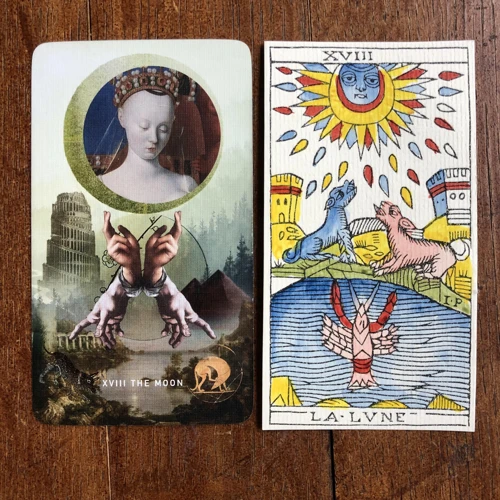
The influence of Tarot on Surrealist art is both intriguing and profound. Early Surrealists, such as Salvador Dalí and Max Ernst, were fascinated by the mystique and symbolism found within Tarot cards. Tarot Imagery in Surrealist Paintings became a prominent feature, with artists incorporating Tarot symbols and motifs into their works. The use of Tarot imagery allowed Surrealists to tap into the realm of the subconscious and explore hidden meanings and interpretations. This connection between Tarot and Surrealism goes beyond mere aesthetic appeal; it delves into Psychological and Philosophical Connections as well. Surrealists saw the Tarot as a powerful tool for unlocking the depths of the mind and unveiling hidden truths. The symbolism and archetypes found within Tarot cards resonated with their exploration of dreams, the unconscious, and the human psyche. This fusion of Tarot and Surrealism created a fascinating amalgamation of mysticism, psychology, and art, resulting in works that continue to captivate and perplex audiences to this day.
Early Surrealists and Tarot
Early Surrealists were deeply intrigued by the mystical and symbolic nature of Tarot. Artists such as Salvador Dalí, Max Ernst, and André Breton delved into the world of Tarot cards, viewing them as a pathway to unlocking the subconscious and tapping into their own creativity. Tarot decks, with their vivid imagery and archetypal symbolism, provided a rich source of inspiration for the Surrealists. Dalí, known for his surrealist paintings, incorporated Tarot symbolism into his artwork, infusing his paintings with enigmatic figures and dreamlike landscapes. Max Ernst, another prominent Surrealist artist, created a series of collages titled “Histoire naturelle” which showcased Tarot cards as a central theme. These early Surrealists saw Tarot as a means to access hidden truths, explore the depths of the human psyche, and challenge societal norms. Tarot became a tool for the Surrealists to communicate their innermost thoughts and desires, blurring the lines between fantasy and reality in their artistic creations. The fascination with Tarot among the early Surrealists laid the foundation for its significant influence on the movement as a whole.
Tarot Imagery in Surrealist Paintings
Tarot imagery played a significant role in surrealist paintings, adding depth, symbolism, and a sense of mystique to the artworks. Surrealist artists were drawn to the intricate and enigmatic imagery found in Tarot cards, using them as a source of inspiration and a means of exploring the subconscious. The use of Tarot in surrealist paintings was not limited to depicting specific cards but rather incorporated a variety of symbolic elements associated with the Tarot. These included archetypal figures such as the Fool, the Magician, and the High Priestess, as well as symbols like the moon, the sun, and the labyrinth. The inclusion of Tarot imagery allowed the artists to tap into the innate symbolism associated with the cards, adding an extra layer of meaning to their works. The juxtaposition of Tarot imagery in surrealism created a sense of intrigue and mystery for the viewer, inviting them to interpret the symbolic connections and delve into the depths of the unconscious mind through the visual language of the paintings. Tarot imagery in surrealist paintings served as a bridge between the conscious and the unconscious, blending elements of divination, mysticism, and artistic expression.
Psychological and Philosophical Connections
Psychological and philosophical connections played a pivotal role in the relationship between Surrealism and Tarot. Surrealists were deeply interested in the workings of the human mind and the exploration of the subconscious. They believed that by tapping into the realm of dreams, fantasies, and the irrational, they could access a deeper truth about the human condition. This fascination with the subconscious mind aligned closely with the concept of Tarot, which is often used as a tool for self-reflection, introspection, and uncovering hidden aspects of one’s psyche. Both Surrealism and Tarot emphasized the power of symbolism and the interpretation of symbols as a means of accessing deeper truths. This shared interest in the symbolic and the subconscious contributed to the natural affinity between the two, as Surrealist artists found inspiration in the archetypal imagery and intricate symbolism of Tarot cards. The connection between Surrealism and Tarot goes beyond surface-level aesthetics; it delves into the very foundations of human psychology and philosophy, seeking to unlock the mysteries of the human mind and existence itself.
Impact on Surrealist Techniques
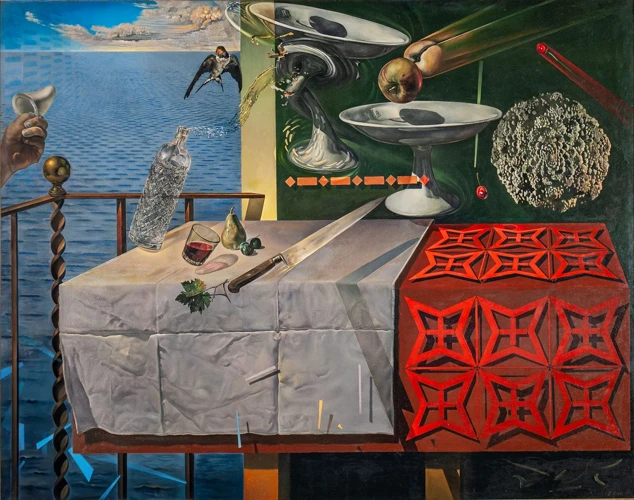
The influence of Tarot on Surrealist art extended beyond just imagery and symbolism; it also had a profound impact on the Surrealist Techniques employed by artists. One key technique embraced by Surrealists was automatism, a method where artists would create art without conscious control, allowing their unconscious mind to guide the process. This technique mirrored the act of Tarot reading, where the cards are chosen randomly, and the interpretation is based on the subconscious connection made by the reader. Another technique influenced by Tarot was the use of dream-like imagery and symbolism, as seen in the cryptic and otherworldly nature of Tarot cards. Surrealists incorporated these elements into their art, creating works that evoked a sense of mystery, ambiguity, and psychological depth. The combination of automatism and dream-like symbolism allowed Surrealists to tap into realms beyond conscious comprehension, exploring the depths of the human psyche and challenging traditional artistic norms.
Automatism and Randomness
Automatism and randomness were key techniques employed by Surrealist artists to tap into the unconscious mind and create art free from the constraints of conscious control. Automatism involved creating art through spontaneous and automatic movements, bypassing the rational mind and allowing the subconscious to take over. This technique aimed to reveal hidden thoughts, desires, and emotions, often resulting in surreal and unexpected imagery.
Surrealist artists embraced the idea of chance and randomness as a way to inject unpredictability and surprise into their work. They would often incorporate elements such as automatic writing or automatic drawing, letting the hand move freely without conscious direction. This allowed the subconscious mind to express itself, giving rise to imagery that was strange, fantastical, and unconventional.
By embracing automatism and randomness, Surrealist artists sought to access deeper layers of the psyche and explore the untapped realms of the mind. Through these techniques, they believed they could transcend traditional artistic boundaries and reveal hidden truths about the human experience. This approach not only led to the creation of visually captivating and thought-provoking artworks but also challenged societal norms and conventions, pushing the boundaries of what was considered acceptable in art.
Using a combination of automatism, randomness, and a touch of madness, Surrealist artists were able to create works that were mysterious, captivating, and infused with a sense of the uncanny. They opened up new possibilities for artistic expression and inspired generations of artists who came after them. The influence of automatism and randomness can still be seen in contemporary art, where artists continue to explore the depths of the unconscious and push the boundaries of creativity.
Dream-like Imagery and Symbolism
Dream-like imagery and symbolism played a significant role in the Surrealist art movement. Artists sought to tap into the unconscious mind and harness the power of dreams to create their artworks. This dream-like imagery often featured fantastical and strange elements that defied logic and reason. Surrealists were fascinated by the symbols and archetypes that emerged from dreams, seeing them as a way to access deeper truths and hidden meanings. The symbolism used in Surrealist art was often enigmatic and open to interpretation. It was a way for artists to convey complex emotions, desires, and fears, transcending the boundaries of traditional representation. These dream-like images and symbols allowed Surrealists to explore the subconscious mind and challenge conventional notions of reality and meaning. Through their art, Surrealist artists aimed to evoke a sense of perplexity and wonder, inviting viewers to question their own perceptions and delve into the realms of the imagination. This emphasis on dream-like imagery and symbolism became a defining characteristic of Surrealist art, distinguishing it from other art movements of the time.
Interpretation of Tarot in Surrealist Art
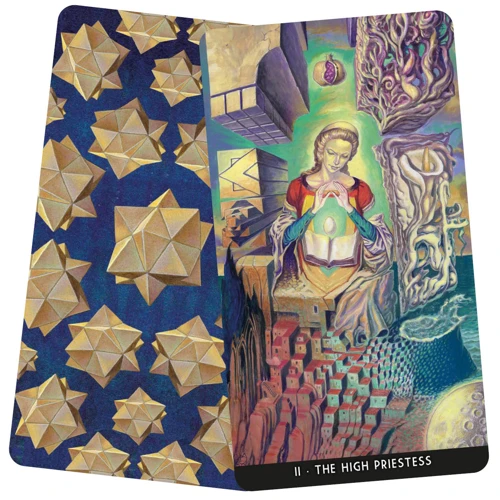
The interpretation of Tarot in Surrealist art goes beyond mere divination and delves into the depths of the subconscious mind. Surrealists saw Tarot cards as a powerful tool for unlocking hidden meanings and tapping into the collective unconscious. Personal and Collective Interpretations were intertwined in the artwork, with artists drawing upon their own personal experiences and emotions while also tapping into the universal symbols and archetypes depicted in the Tarot. Each card held a myriad of possible interpretations, allowing for a wide range of artistic expression. The use of Tarot in Surrealist art allowed for a unique dialogue between the conscious and unconscious mind, creating a sense of mystery and exploration. The cards served as a visual language through which the artists could communicate their deepest thoughts and emotions. Through their art, the Surrealists aimed to Unleash the Subconscious and invite viewers to engage with their own subconscious realms, fostering introspection and self-discovery.
Personal and Collective Interpretations
Personal and collective interpretations played a significant role in how Surrealist artists incorporated Tarot symbolism into their works. Each artist brought their own unique perspective and understanding to the Tarot cards, infusing them with their personal symbolism and meanings. The interpretation of Tarot in Surrealist art was often subjective, reflecting the artist’s own experiences, desires, and subconscious. For some, Tarot cards were seen as a glimpse into the hidden aspects of the self, a tool for self-reflection and introspection. They delved into the archetypal imagery of the cards to access their own innermost thoughts and emotions. Others embraced the collective interpretations of Tarot, seeing it as a language of the collective unconscious that transcended individual experiences. They explored the interconnectedness of humanity, drawing on the universal symbolism of the Tarot to convey shared human experiences and emotions. Whether through personal interpretations or collective symbolism, the Tarot cards served as a rich source of inspiration for Surrealist artists, encouraging them to explore the depths of their imagination and subconscious mind.
Unleashing the Subconscious
The Surrealist movement was deeply interested in exploring the realm of the subconscious, and the use of Tarot cards played a significant role in . Tarot cards, with their archetypal imagery and symbolic meanings, provided a gateway for the Surrealists to tap into the depths of their unconscious minds. By immersing themselves in the world of Tarot, artists such as Salvador Dalí, Max Ernst, and Leonora Carrington sought to access their innermost thoughts, desires, and fears. The act of interpreting Tarot cards allowed them to bypass reason and logic, instead relying on their subconscious intuition to guide their artistic process. Tarot became a tool for self-reflection and self-discovery, enabling the Surrealists to delve into their deepest, most hidden thoughts and emotions. This exploration of the subconscious through Tarot not only influenced their artistic creations but also expanded their understanding of the human psyche. The Surrealists believed that by embracing the irrational and the subconscious, they could unveil hidden truths and insights about the human condition, pushing the boundaries of artistic expression and inviting viewers to explore the depths of their own psyche.
The Legacy of Tarot in Surrealist Art
The impact of Tarot on Surrealist art movements extends far beyond its initial influence. Continued Influence in Modern Art is a testament to the enduring legacy of Tarot in the art world. Even after the peak of the Surrealist movement, Tarot continues to inspire and captivate artists across various mediums. Its rich symbolism and archetypal imagery provide a wellspring of inspiration for those seeking to delve into the depths of the subconscious and explore the realms of the unknown. Tarot decks remain popular among contemporary artists, who use them as a tool for self-reflection, introspection, and creative exploration. Tarot’s many interpretations and the personal and collective meanings assigned to each card make it a valuable resource for artists looking to imbue their work with layers of depth and symbolism. As modern art continues to evolve, it is clear that the influence of Tarot on Surrealist art is an enduring and significant aspect of artistic expression.
Continued Influence in Modern Art
The continued influence of Tarot in modern art is undeniable. Tarot cards have become a popular motif in contemporary art, appearing in various mediums such as paintings, illustrations, and even digital art. Artists are drawn to the rich symbolism and mystique that Tarot cards offer, finding inspiration in the archetypal imagery and the sense of mystery they evoke. The Tarot’s ability to tap into the subconscious and explore the depths of the human psyche continues to captivate artists in their creative process.
Tarot has also made its way into modern installations and performance art. Artists have incorporated Tarot readings and Tarot-inspired elements into their interactive exhibitions, allowing viewers to engage with the cards and explore their personal narratives. This integration of Tarot in contemporary art not only offers an immersive experience but also invites contemplation and introspection.
Tarot’s influence extends beyond the art world, permeating modern culture and popular media. It is not uncommon to see Tarot imagery in fashion, album covers, and advertising campaigns. These adaptations and reinterpretations demonstrate the lasting impact of Tarot on contemporary aesthetics and its ability to resonate with people across different artistic mediums.
The continued presence of Tarot in modern art is a testament to its enduring allure and its capacity to inspire and provoke thought. Whether used as a source of inspiration, a tool for self-reflection, or a means of storytelling, Tarot remains a vibrant and influential force in the ever-evolving landscape of contemporary art.
Tarot as a Tool for Inspiration
Tarot served as a powerful tool of inspiration for Surrealist artists, offering a wealth of symbolism and archetypal imagery to draw upon in their creative endeavors. The enigmatic nature of Tarot cards sparked intrigue and mystery among Surrealists, who saw them as a means of tapping into the subconscious and exploring the depths of the human psyche. By studying the various cards and their meanings, Surrealists found a wellspring of inspiration for their artwork.
1. Archetypal Symbols: Tarot cards are rich in archetypal symbols, such as the Fool, the Magician, or the High Priestess. Surrealists found resonance in these symbols, as they represented universal themes and concepts that transcended rational thinking. These symbols provided a starting point for Surrealist artists to delve into their own subconscious and explore the deeper layers of human existence.
2. Storytelling Possibilities: Each Tarot card tells a story, presenting different scenarios and characters. Surrealists saw these stories as invitations to dive into their own narratives, creating intriguing and thought-provoking artworks. The symbolism of the Tarot cards allowed Surrealists to construct complex visual narratives filled with mysterious and surreal elements, crafting their own unique interpretations.
3. Mystical and Esoteric Connections: Tarot cards have long been associated with mystical and esoteric traditions. Surrealists, with their fascination for the occult and the mysterious, were drawn to the mystical aura surrounding Tarot. They believed that by infusing their art with Tarot symbolism, they could tap into hidden knowledge and explore the realms beyond the conscious mind.
4. Unlocking the Subconscious: Surrealists regarded the Tarot as a key to unlocking the realms of the unconscious. By delving into their own subconscious through Tarot-inspired art, they sought to reveal hidden desires, fears, and dreams. This exploration of the subconscious allowed Surrealists to tap into a wellspring of creativity and produce artworks that challenged conventional norms and pushed the boundaries of artistic expression.
Tarot served as more than just a divination tool for Surrealists; it became a wellspring of inspiration, a gateway to the depths of the human psyche, and a catalyst for their imaginative and unconventional artworks. By incorporating Tarot symbolism into their art, Surrealist artists were able to tap into the vast realm of the unconscious, bringing forth unique and thought-provoking creations that continue to captivate audiences to this day.
Conclusion
In conclusion, the impact of Tarot on Surrealist art movements cannot be overstated. The utilization of Tarot symbolism, imagery, and themes by Surrealist artists provided them with a gateway to explore the depths of the unconscious mind and tap into the realm of dreams and fantasies. The Tarot became a powerful tool for inspiration, allowing artists to unleash their creativity and challenge societal norms. The legacy of Tarot in Surrealist art is still evident in modern art, where artists continue to draw influence from the enigmatic symbolism and mystical allure of the Tarot cards. The connection between Tarot and Surrealism goes beyond mere aesthetics; it delves into the realms of psychology, philosophy, and the exploration of the self. The Tarot serves as a reminder that the human experience is multifaceted and complex, and that there is always more beneath the surface. As Surrealist art continues to push boundaries and challenge traditional modes of representation, the influence of Tarot will undoubtedly persist, serving as a constant source of intrigue and inspiration.
Frequently Asked Questions
What is the purpose of Surrealism?
The purpose of Surrealism is to challenge societal norms and rationality by tapping into the unconscious mind and exploring the realm of dreams, fantasies, and the irrational.
How did Surrealism emerge?
Surrealism emerged in the aftermath of World War I as a response to the trauma and disillusionment of the time. Artists and intellectuals sought to rebel against reason and embrace the irrational.
What are the key elements of Surrealism?
The key elements of Surrealism include automatism, which is the creation of art without conscious control, the use of dream-like imagery and symbolism, and the blurring of boundaries between reality and imagination.
What is automatism in Surrealism?
Automatism is a technique used by Surrealist artists to create art without conscious control. It allows for the expression of the unconscious mind and removes restrictions imposed by rationality.
What is the history of Tarot?
Tarot has a long and complex history, with origins dating back to ancient Egypt and the Middle Ages. Originally used for divination purposes, Tarot cards gradually evolved into a rich symbol system with various interpretations.
What is the symbolism of Tarot cards?
Tarot cards carry a range of symbolic meanings that can vary depending on the deck used. They often depict archetypal figures, elements of nature, and universal themes such as love, death, and transformation.
How did Tarot influence the Surrealist art movement?
Tarot had a significant influence on Surrealist artists, inspiring them with its symbolism and enigmatic imagery. They saw Tarot as a tool to tap into the unconscious mind and explore their own personal and collective creativity.
What is the connection between Tarot and Surrealist techniques?
Tarot influenced Surrealist techniques such as automatism, where artists would create in a spontaneous and subconscious manner. The dream-like imagery and symbolic language of Tarot cards also inspired Surrealist artists to create works that challenge rationality.
How did Surrealists interpret Tarot in their art?
Surrealists interpreted Tarot in both personal and collective ways. They saw Tarot as a means to unleash the subconscious, explore their own psychological depths, and question conventional notions of reality.
What is the legacy of Tarot in Surrealist art?
The legacy of Tarot in Surrealist art can still be seen today, as its influence continues to inspire contemporary artists. Tarot has become not only a tool for divination but also a source of artistic inspiration and a symbol of the subconscious mind.
